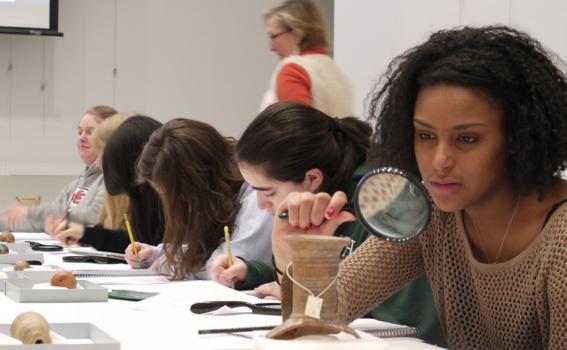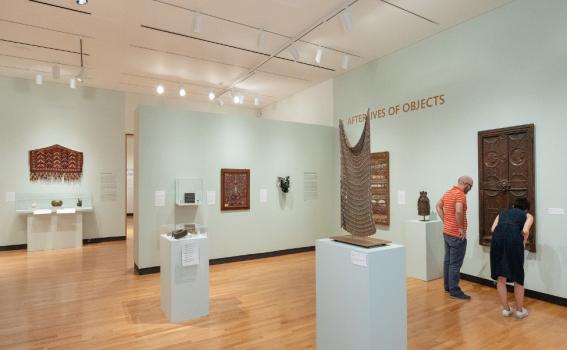Ideas & Inspiration
Are you interested in bringing your class to the Museum, but not sure where to begin? Here you can browse your colleagues' innovative approaches to object-based teaching. Museum visits can connect objects directly to course themes, while simultaneously creating a space for experiential learning and honing important transferable skills. These include close observation, visual and critical analysis, questioning assumptions, evidence-based reasoning, working collaboratively in diverse teams, creative response, and research using primary sources.

Elizabeth Klarich, Five College Assistant Professor of Anthropology
In this course, Professor Klarich and Museum staff guided students through closeup examinations of ancient vessels.
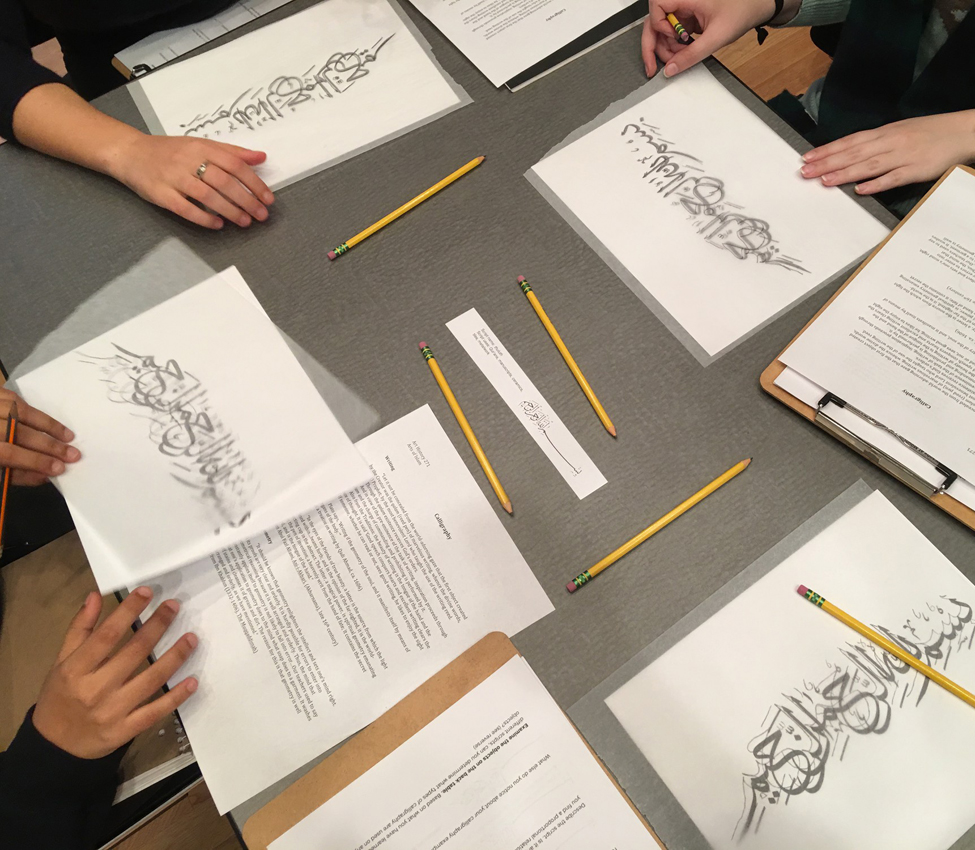
Michael Davis, Professor of Art History
Through investigation of major works produced in the Muslim world between the seventh and seventeenth centuries from Spain to India, this course explored the ways in which art and architecture were used to embody the faith, accommodate its particular needs, and express the power of its rulers. Topics included the calligraphy of the Qur'an, illustrated literature, the architecture of the mosque, and the aristocratic palace.

Himali Jayathilake, Senior Laboratory Instructor, and Maria Gomez, Professor of Chemistry
Traversing disciplinary boundaries, this science lab used infrared spectroscopy in the Art Museum to examine hidden layers of paint.
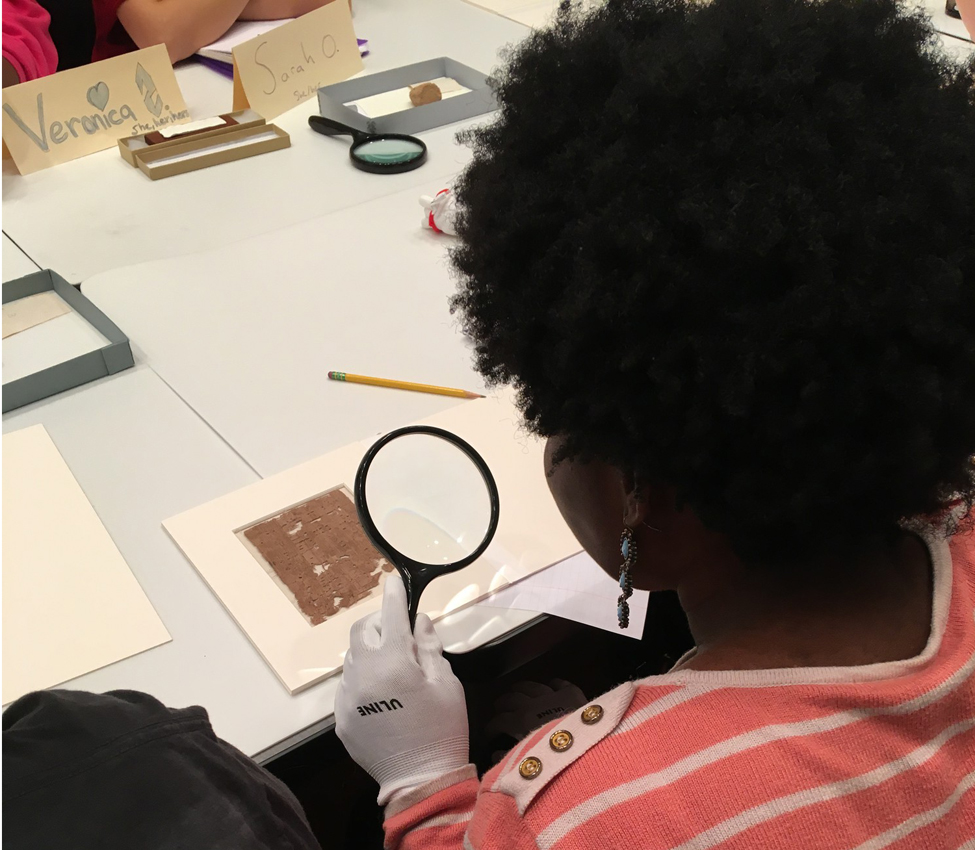
Michael Penn, Professor of Religion
Over multiple visits to the Art Museum, this course focused on using coins and manuscripts as primary evidence.

Dylan Shepardson, Assistant Professor of Mathematics
This interdisciplinary First-Year Seminar examined the concept of thermodynamics through visual analogies. Contemporary works of art provided a catalyst for class discussion and opened a dialogue on the scientific concept's societal impact.
Desmond Fitz-Gibbon, Assistant Professor of History
Students in this course interpreted the history of money using a variety of coins and money-related objects.

Christine DeLucia, Assistant Professor of History
This course examines dynamic histories of Native American tribes, Euro-American "explorers" and colonists, cowboys and miners, Asian immigrant laborers, and mariners, all of whom helped create interior and oceanic worlds. It focuses on natural and human changes in specific locales, and also explores how public histories at these places shape the present and future.
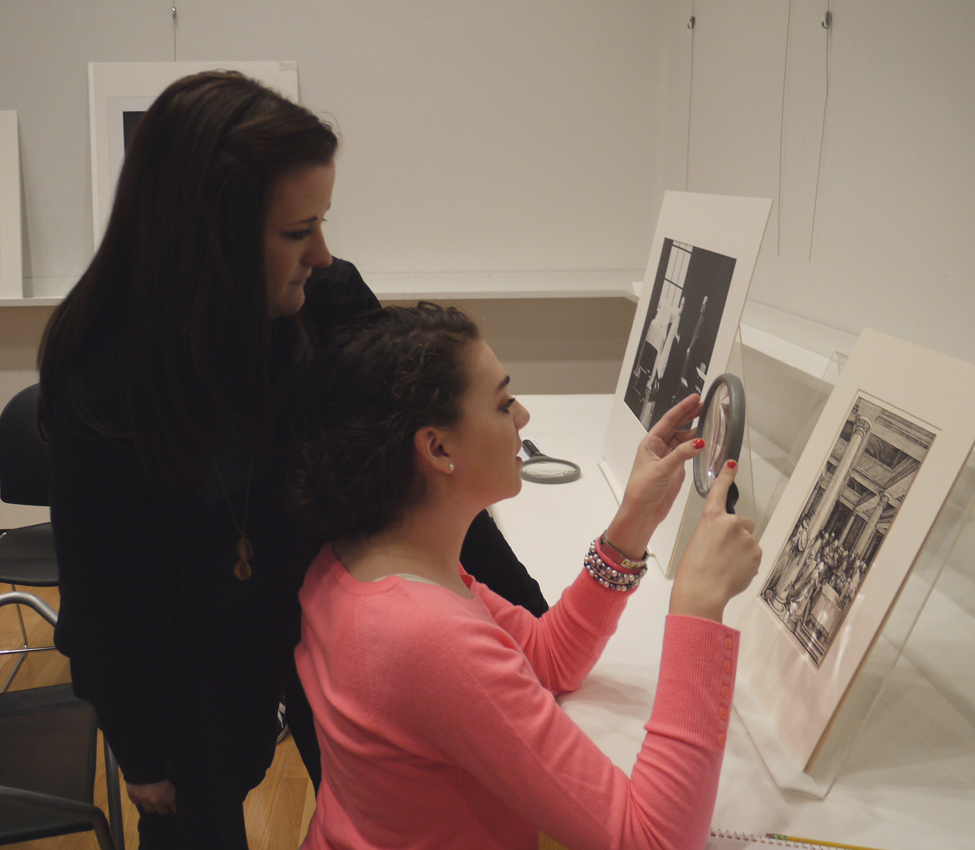
Amy Rodgers, Assistant Professor of English
This customized museum visit focused on the visual analysis of photographs as a preparatory exercise for analyzing film. The classroom activities were also designed to strengthen students’ skills in collaborative group work, oral presentations, and supporting an argument in a written paper. Supporting materials for this museum collaboration include a “Visual Reading Exercise” that guided students through their examination of an artwork’s formal elements—dimension, lighting, geometry, and mise-en-scène—and a “Close Reading Film Analysis Paper.”
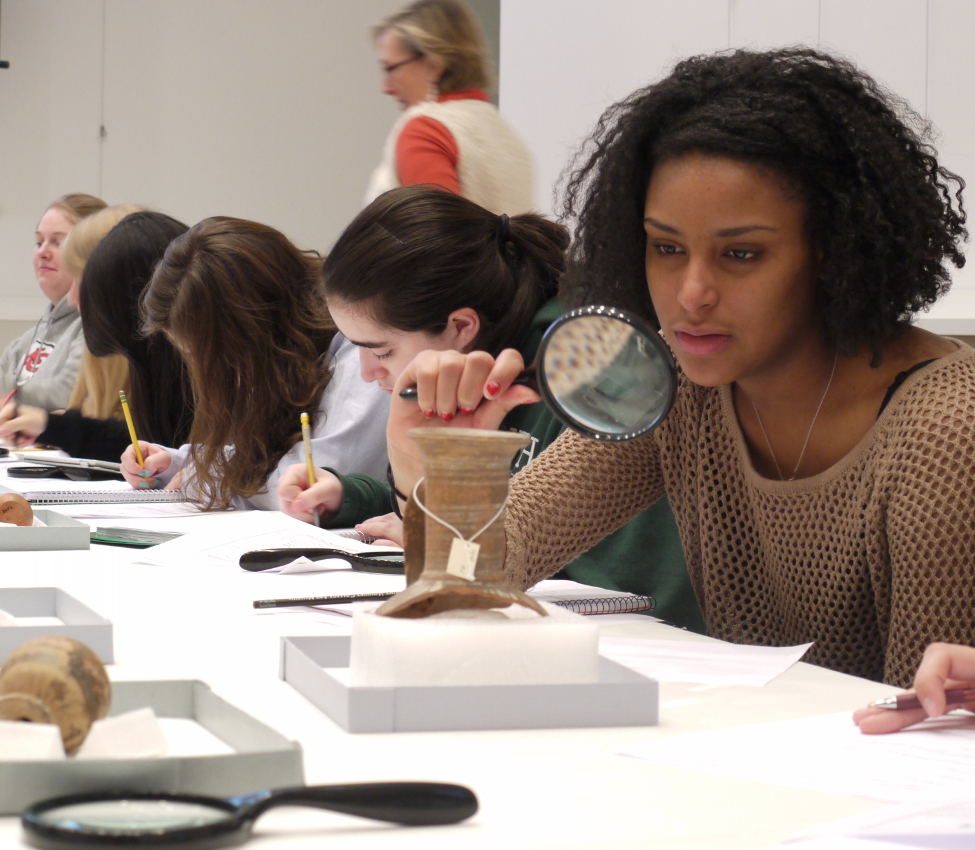
Bettina Bergmann, Professor of Art History
This course demonstrates the rich potential for students to conduct primary research at the Museum and present their findings creatively. Over the course of multiple visits to the Art Museum, students each conducted an in-depth study of an ancient object in the Museum’s collection and then designed an exhibition using this object as a touchstone. The course profile below includes pdfs of an “Object Research Report” assignment, an “Exhibition Rationale” assignment, and a preview of one student's innovative final project.
Events And Links
In addition to nearly 500 objects on view in the Museum’s permanent collection galleries as well as rotating special exhibitions, the Art Museum and the Joseph Allen Skinner Museum combined are...
Celebrating Ten Years of Teaching with Art
Inspired by the broad interpretative possibility of objects, Major Themes is an innovative, two-year exhibition that brings thought-provoking dialogues from the Museum’s teaching classroom into its public galleries.
The Mount Holyoke College Art Museum’s Teaching with Art program...

 Give
Give

